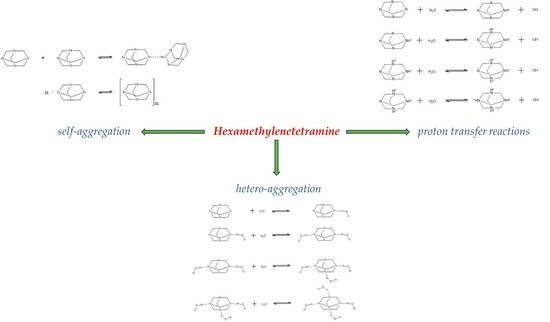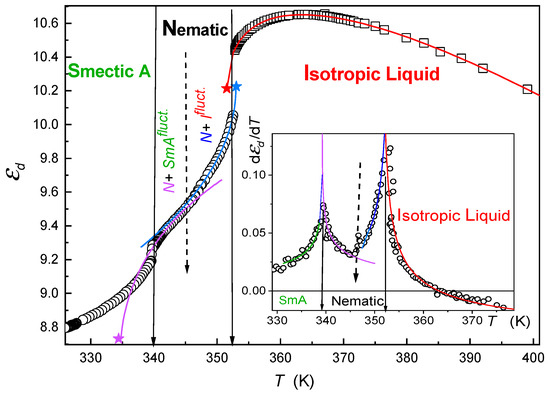Molecular Liquids
A topical collection in Molecules (ISSN 1420-3049). This collection belongs to the section "Physical Chemistry".
Submission Status:
Closed
|
Viewed by 9394
Share This Topical Collection
Editors
 Dr. Lorenzo Gontrani
Dr. Lorenzo Gontrani
 Dr. Lorenzo Gontrani
Dr. Lorenzo Gontrani
E-Mail
Website
Collection Editor
Dipartimento di Chimica, Sapienza Università di Roma, I-00185 Roma, Italy
Interests: ionic liquids; deep eutectic solvents; molecular liquids; computational chemistry; quantum mechanics methods; molecular simulations/dynamics; physical chemistry; X-Ray diffraction; infrared spectroscopy
Special Issues, Collections and Topics in MDPI journals
 Prof. Fabio Ramondo
Prof. Fabio Ramondo
 Prof. Fabio Ramondo
Prof. Fabio Ramondo
E-Mail
Website
Collection Editor
Dipartimento di Scienze Fisiche e Chimiche- Università dell'Aquila, Via Vetoio (Coppito 1), I-67100 Coppito (AQ), Italy
Interests: ab initio calculations; ionic liquids; molecular spectroscopy
Topical Collection Information
Dear Colleagues,
This Topical Collection is related to the structural and dynamical properties of liquids, either in their pure form or in a mixture with other (molecular or ionic) liquids, as well as in other environments, like, for instance, under confinement or near solid surfaces. Indeed, very exciting and innovative results have been reported in recent years on, for instance, critical phenomena, liquid–liquid phase transitions, transport properties, etc. Researchers working in this field, both from the experimental and theoretical side, are cordially invited to contribute original research papers or reviews to this Topical Collection of Molecules, which report on the evaluation of the liquid state properties of well-established systems with newly designed experiments or under non-conventional conditions, or on the design, preparation and characterization of new systems, possibly possessing physical-chemical properties of technological interest.
Dr. Lorenzo Gontrani
Prof. Fabio Ramondo
Collection Editor
Manuscript Submission Information
Manuscripts should be submitted online at www.mdpi.com by registering and logging in to this website. Once you are registered, click here to go to the submission form. Manuscripts can be submitted until the deadline. All submissions that pass pre-check are peer-reviewed. Accepted papers will be published continuously in the journal (as soon as accepted) and will be listed together on the collection website. Research articles, review articles as well as short communications are invited. For planned papers, a title and short abstract (about 250 words) can be sent to the Editorial Office for assessment.
Submitted manuscripts should not have been published previously, nor be under consideration for publication elsewhere (except conference proceedings papers). All manuscripts are thoroughly refereed through a single-blind peer-review process. A guide for authors and other relevant information for submission of manuscripts is available on the Instructions for Authors page. Molecules is an international peer-reviewed open access semimonthly journal published by MDPI.
Please visit the Instructions for Authors page before submitting a manuscript.
The Article Processing Charge (APC) for publication in this open access journal is 2700 CHF (Swiss Francs).
Submitted papers should be well formatted and use good English. Authors may use MDPI's
English editing service prior to publication or during author revisions.
Keywords
- Molecular liquids
- Mixtures
- Critical phenomena
- Transport properties
- Molecular simulations
- Structural properties
- Dynamical properties
Published Papers (3 papers)
Open AccessArticle
Identification of Aggregation Processes in Hexamethylenetetramine Aqueous Solutions: A Comprehensive Raman and Acoustic Spectroscopic Study Combined with Density Functional Theory Calculations
by
Stefanos Tsigoias, Michael G. Papanikolaou, Themistoklis A. Kabanos and Angelos G. Kalampounias
Cited by 2 | Viewed by 1909
Abstract
Raman scattering has been employed to study in detail the concentration dependence of the vibrational modes for hexamethylenetetramine (HMTA) aqueous solutions. The formation of protonated and/or aggregated species has been clarified by comparing the experimental with the theoretically predicted vibrational spectra by means
[...] Read more.
Raman scattering has been employed to study in detail the concentration dependence of the vibrational modes for hexamethylenetetramine (HMTA) aqueous solutions. The formation of protonated and/or aggregated species has been clarified by comparing the experimental with the theoretically predicted vibrational spectra by means of quantum mechanical calculations. The analysis has shown that the vibrational modes of the solutions arise from a contribution of the vibrational modes of the HMTA self-aggregates and hetero-aggregates of HMTA with water molecules that are formed in the low- and intermediate-concentration regions, respectively. The protonation of HMTA is ruled out due to the large differences between the experimental and the theoretically calculated spectra of the protonated molecules of HTMA in the fingerprint region. In the low-concentration solutions, the hetero-aggregation reaction of HMTA with water is the dominant mechanism, while at higher concentrations, a self-aggregation mechanism occurs. Ultrasonic absorption and velocity measurements were carried out for hexamethylenetetramine aqueous solutions. The acoustic spectra reveal the presence of only one single Debye-type relaxation process that is assigned to the aggregation mechanism of HMTA. The sound absorption data follow two different dependencies on the HMTA mole fraction. The crossover 0.018 mole fraction signifies two separate regions with distinct structural characteristics. The relaxation mechanism observed in dilute solutions was attributed to hetero-association of HMTA with water molecules, while at higher concentrations, the observed relaxation process was assigned to the self-association reaction of HMTA molecules. This structural transformation is also reflected in several physicochemical properties of the system, including the kinematic viscosity, the mass density, the sound speed and the adiabatic compressibility of the HMTA aqueous solutions. The combination of vibrational and acoustic spectroscopies with molecular orbital calculations allowed us to disentangle the underlying processes and to elucidate the observed relaxation mechanism in the HMTA aqueous solutions.
Full article
►▼
Show Figures
Open AccessArticle
Unveiling the Molecular Origin of Vapor-Liquid Phase Transition of Bulk and Confined Fluids
by
Sorrasit Jitmitsumphan, Tirayoot Sripetdee, Tharathep Chaimueangchuen, Htet Myet Tun, Sorayot Chinkanjanarot, Nikom Klomkliang, Sira Srinives, Woranart Jonglertjunya, Tau Chuan Ling and Poomiwat Phadungbut
Cited by 1 | Viewed by 3109
Abstract
At temperatures below the critical temperature, discontinuities in the isotherms are one critical issue in the design and construction of separation units, affecting the level of confidence for a prediction of vapor–liquid equilibriums and phase transitions. In this work, we study the molecular
[...] Read more.
At temperatures below the critical temperature, discontinuities in the isotherms are one critical issue in the design and construction of separation units, affecting the level of confidence for a prediction of vapor–liquid equilibriums and phase transitions. In this work, we study the molecular mechanisms of fluids that involve the vapor–liquid phase transition in bulk and confinement, utilizing grand canonical (GCE) and meso-canonical (MCE) ensembles of the Monte Carlo simulation. Different geometries of the mesopores, including slit, cylindrical, and spherical, were studied. During phase transitions, condensation/evaporation hysteretic isotherms can be detected by GCE simulation, whereas employing MCE simulation allows us to investigate van der Waals (vdW) loop with a vapor spinodal point, intermediate states, and a liquid spinodal point in the isotherms. Depending on the system, the size of the simulation box, and the MCE method, we are able to identify three distinct groups of vdW-type isotherms for the first time: (1) a smooth S-shaped loop, (2) a stepwise S-shaped loop, and (3) a stepwise S-shaped loop with just a vertical segment. The first isotherm type is noticed in the bulk and pores having small box sizes, in which vapor and liquid phases are close and not clearly identified. The second and the third types occurred in the bulk, cylindrical, and slit mesopores with sufficiently large spaces, where vapor and liquid phases are distinctly separated. Results from our studies provide an insight analysis into vapor–liquid phase transitions, elucidating the effect of the confinement of fluid behaviors in a visual manner.
Full article
►▼
Show Figures
Open AccessArticle
Pretransitional Effects of the Isotropic Liquid–Plastic Crystal Transition
by
Aleksandra Drozd-Rzoska, Szymon Starzonek, Sylwester J. Rzoska, Joanna Łoś, Zdravko Kutnjak and Samo Kralj
Cited by 11 | Viewed by 2876
Abstract
We report on strong pretransitional effects across the isotropic liquid–plastic crystal melting temperature in linear and nonlinear dielectric response. Studies were carried out for cyclooctanol (C
8H
16O) in the unprecedented range of temperatures 120 K <
T < 345 K.
[...] Read more.
We report on strong pretransitional effects across the isotropic liquid–plastic crystal melting temperature in linear and nonlinear dielectric response. Studies were carried out for cyclooctanol (C
8H
16O) in the unprecedented range of temperatures 120 K <
T < 345 K. Such pretransitional effects have not yet been reported in any plastic crystals. Results include the discovery of the experimental manifestation of the Mossotti Catastrophe behavior, so far considered only as a hypothetical paradox. The model interpretations of experimental findings are proposed. We compare the observed pretransitional behavior with the one observed in octyloxycyanobiphenyl (8OCB), typical liquid crystal (LC), displaying a reversed sequence of phase transitions in orientational and translational degrees of order on varying temperature. Furthermore, in its nematic phase, we demonstrate first-ever observed temperature-driven crossover between regions dominated by isotropic liquid and smectic A pretransitional fluctuations. We propose a pioneering minimal model describing plastic crystal phase behavior where we mimic derivation of classical Landau-de Gennes-Ginzburg modeling of Isotropic-Nematic-Smectic A LC phase behavior.
Full article
►▼
Show Figures










